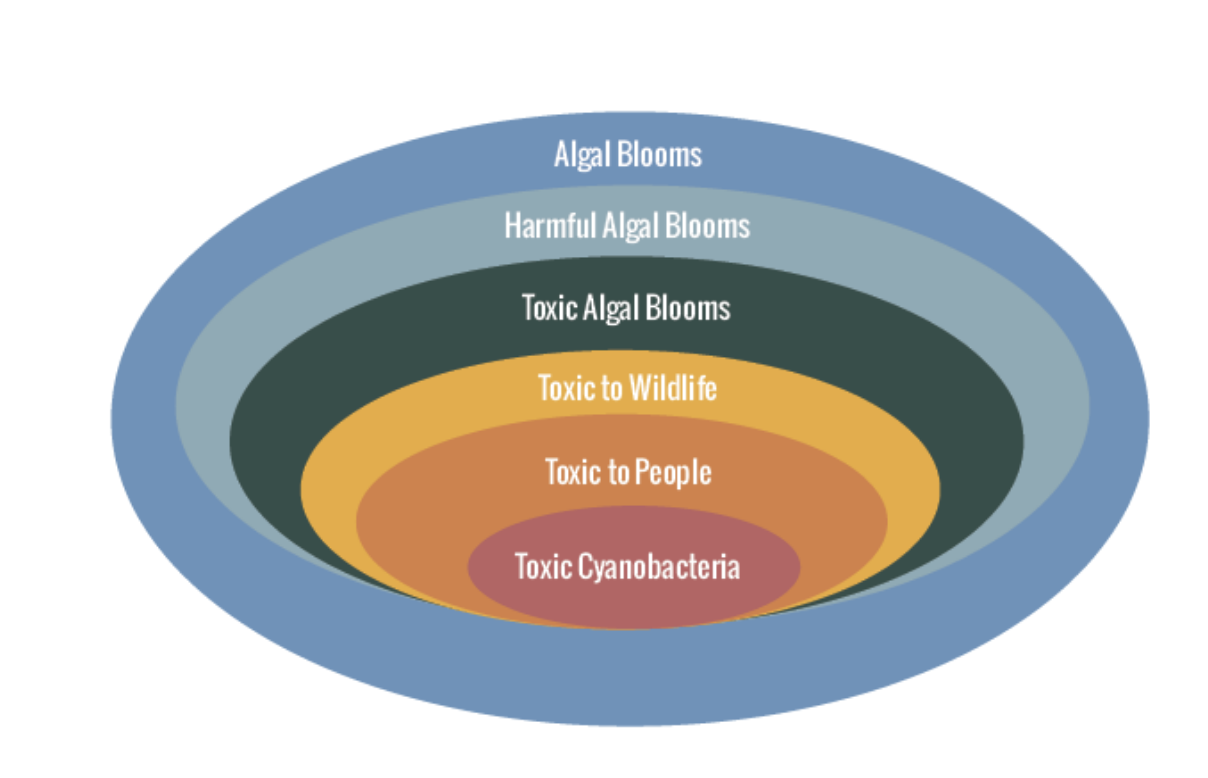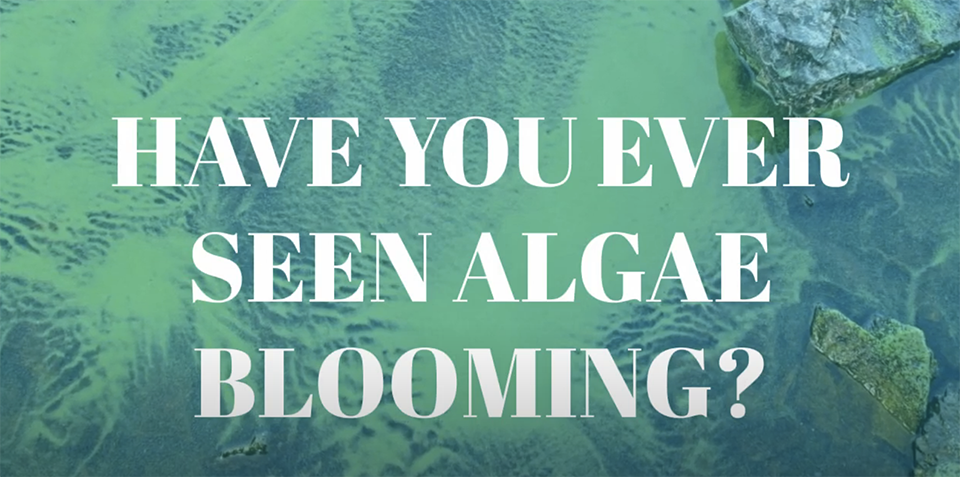Harmful Algal Blooms (HABs)

Arizona Harmful Algal Blooms
Algae are tiny organisms found naturally in water. As part of a natural cycle, they typically grow and bloom more intensely during warm summer months and decline during winter. Changes in certain conditions, such as available light, water temperature, water flow, and nutrient availability, can also trigger rapid growth. When an algae bloom grows rapidly in a short time, it is called an algal bloom. Some algal blooms negatively affect public health, aquatic health, or the environment. These are called harmful algal blooms (HABs).
A HAB is a bloom that produces toxins (poisons) that can harm people and animals and, in rare cases, be deadly. In freshwater, blue-green algae is the most common type of toxic algal that poses a threat to public health. There are many kinds of algal toxins, but few accumulate sufficiently to broadly affect wildlife in the water, such as fish and shellfish. Even fewer toxins are potent enough to threaten mammals that live on land, such as dogs and people.

It is important to note that not all HABs produce toxins. If a bloom persists for long enough it can cause a dead zone (lack of available oxygen) which can cause fish to die off. This can be alarming but may not always indicate that the bloom is a toxic HAB.
What Does Harmful Algae Look Like?
- Look like pea soup or spilled green paint
- Discolor or leave streaks in the water
- Be surface scum, mats or films
- Appear as green dots or globs floating below the surface
Examples | View/Download >
Practice Healthy Recreational Water Habits
Enjoying the outdoors is an important part of an active, healthy lifestyle. ADEQ recommends following these simple, healthy habits in waters with visible algae:
- STAY AWAY from algae and scum in the water – AND – keep children and pets away from algae in the water or on the shore
- DO NOT DRINK or use this water for cooking
- AVOID EATING FISH from the water until the bloom is dissipated as toxins can build up in fish tissue
- WHEN IN DOUBT, STAY OUT
Boating and fishing are acceptable during blue-green algal blooms, but people should follow the advice above and avoid contact with or ingestion of the water.
How to Report a Harmful Algal Bloom
You can help protect public health by reporting possible HABs. If you observe an algal bloom, ADEQ recommends:
- Notifying the local land owner or manager of the waterbody
- Filing a report using the Arizona Water Watch mobile app:
1. Download the Survey123 field app:
• From iTunes Store (Apple Devices) | Download >
• From Google Play (Android Devices) | Download >
• Or select “Open in the Survey123 field app” on your browser | View >
2. Try out the initial app survey. If you need help, download the App User Guide | View >
3. Use the app outdoors and have fun protecting the environment!
Golden Algae
Another type of algae commonly found in Arizona is golden algae. A bloom of golden algae can cause a fish kill, but there is no evidence that golden algae is harmful to people or animals. However, it is advised that people not eat fish impacted by a golden algal bloom. Fish kills and golden algal blooms can be reported to the Arizona Game and Fish Department | Learn More >
Questions?
See our Fact Sheet | View > or visit our frequently asked questions (FAQs) page | View Page >
Watch a Video
HABs Contact
Ph: 602-739-7449
Email >

